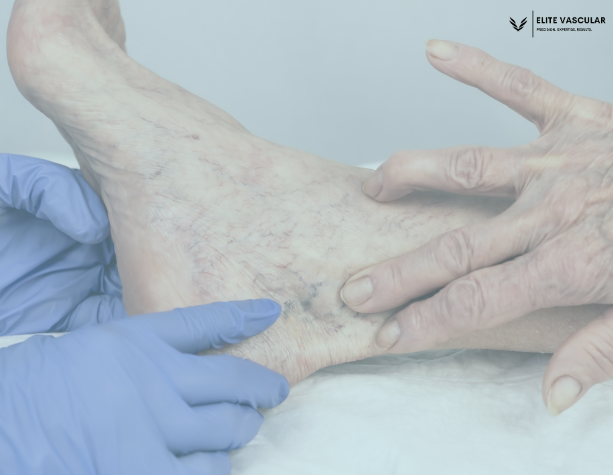- admin
- 0 Comments
Sclerotherapy is a common and efficient treatment for varicose and spider veins, which provides comfort and cosmetic enhancements to many people. It’s important to recognize the system and capacity outcomes of sclerotherapy to reduce expectations and maximize effects. This article highlights the science behind sclerotherapy, discusses common misconceptions about the appearance of veins after treatment, and provides practical solutions to reduce visibility of veins. By searching for elements that can spoil the presence of veins and insisting on the need for good maintenance after treatment, this article wants to provide readers with the knowledge that is necessary to take them to the path of healthy, more aesthetically soothing veins.
Veins look worse after sclerotherapy: Understanding the phenomenon
After sclerotherapy, it is often seen that some patients may feel the color of their veins, much more noticeable than before the procedure. This event can be connected to various sources, including:
- Inflammation: The body’s general reaction to sclerosing agent injected into the veins during inflammation treatment. Veins may appear more major when this inflammation is cured.
- Blood flow changes: Sclerotherapy induces affected veins to slow down and decrease visibility gradually. However, during the entire process of treatment, the body can redirect blood flow to other veins nearby, making them appear more.
- Bruising: Sclerotherapy can cause bruising, which can temporarily spoil the appearance of the veins. As the injury fixes, the veins begin to look more normal.
Understanding the Process of Sclerotherapy
How Sclerotherapy Works to Treat Veins
During sclerotherapy, the injected solution produces irritation in the layer of the vein, as a result of which the fats are formed and later the wound on the vein. It redirects blood flow towards healthy veins and reduces visibility of treated veins.
Types of Veins Treated with Sclerotherapy
Sclerotherapy is often used to treat spider veins and small to medium-sized varicose veins, especially those that occurs near the skin surface and cause cosmetic problems.
Potential Causes of Veins Looking Worse after Sclerotherapy
Factors Contributing to Post-Treatment Vein Appearance
While sclerotherapy is normally effective, built-in vein damage, poor injection technology, or hidden feeder veins can temporarily deteriorate after treatment due to the presence of veins.
Effects of Inflammation and Healing on Veins
Veins from inflammation and treatment process after sclerotherapy may appear more prominent first, as the body struggles to absorb the treated veins and redirect the blood flow, thereby observing the vein visibility to deteriorate.
Managing Expectations and Potential Side Effects
Expected Results vs. Reality
It’s important to understand that after sclerotherapy improvement may not be immediate, and for the best results a number of sessions may be needed. Endurance and realistic expectations are important to proceed in the post-treatment period.
Common Side Effects and How to Address Them
Injuries, redness, swelling and minor pain are potential adverse effects of sclerotherapy, although they usually go after a while. To reduce these symptoms and speed up the treatment process, be sure to follow your healthcare provider’s care recommendations.
Addressing the issue: What can be done?
If you’re concerned about the appearance of your veins following sclerotherapy, there are a few things you may do to help improve situation:
Follow post-treatment care instructions: To reduce inflammation and promote general treatment, you should strictly follow the following instructions after your healthcare provider’s treatment.
Manage bruising: Using cold compress and over-the-counter painkillers as directed will help reduce injury and fix rapidly.
Stay active: The visibility of veins can be decreased and blood float may be elevated through the usage of mild bodily interest together with walking.
Wear compression stockings: If your healthcare company believes that compression stockings may help reduce irritation and blood goes with the flow, they may prescribe that you wear them.
Stay hydrated: Maintaining an adequate level of hydration can assist in the elimination of toxic chemical substances and the enhancement of the best waft of blood, subsequently enhancing the arrival of veins.
Conclusion
Although it is normal for veins to be bad after sclerotherapy, it is usually a temporary problem that goes away only with the body’s healing. Following your healthcare provider’s instructions and maintaining your overall health will help reduce the presence of veins and get the desired results from your sclerotherapy treatment. If you’re concerned about the format of your veins after treatment, talk to your healthcare professional for personal advice and assistance.
